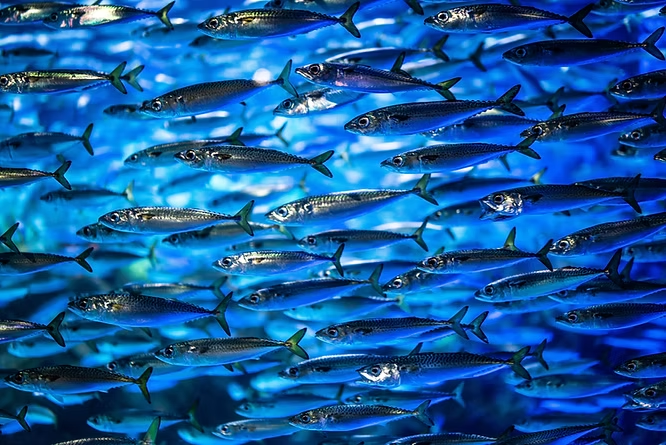Forage Fish: The Unsung Heroes of the Ocean
Top predators along the California coast have faced a troubling year. Starving sea lions have washed up on beaches, and tens of thousands of dead Cassin’s Auklets have been found from Alaska to California. While the exact causes remain unclear, a common thread points to forage fish—small schooling species that serve as the foundation of the marine food web.
What Are Forage Fish?
Forage fish are small, pelagic species that swim in dense schools known as “bait balls.” Common examples include anchovies, sardines, and herring, along with lesser-known species such as sand lance, smelt, and saury. They feed on microscopic plankton and, in turn, provide an energy-rich food source for larger fish, seabirds, and marine mammals. Interestingly, the category also includes non-fish species like krill and squid, which play a similar ecological role.
Forage Fish and Human Demand
Humans also rely heavily on forage fish. Scientists estimate that these species account for over one-third of the global marine fish catch. Surprisingly, around 90% of this catch is not consumed directly by people but is processed into fish meal. This meal is used to feed farmed fish, livestock, poultry, and even pets. Other uses include bait, fertilizers, and nutritional supplements.
Why Forage Fish Are Vulnerable
Despite their abundance, forage fish are particularly vulnerable to overfishing. Their populations naturally fluctuate due to environmental conditions, so sudden drops may not always indicate human impact. However, their tendency to form dense schools makes them easy targets, and catches often remain high even when overall numbers are low. Research has shown that fishing their predators can worsen population crashes, amplifying the risks.
Environmental Pressures
Climate change adds another layer of stress. Warmer ocean waters reduce plankton availability, leaving forage fish with less food. In turn, predators like seabirds, whales, and sea lions struggle to find enough to eat. Scientists are still studying whether overfishing or climate change is the primary driver behind recent declines in the California Current, but it is likely a combination of both.
The Economic Value of Forage Fish
Leaving forage fish in the ocean may actually be more valuable than catching them. A 2012 report by the Lenfest Forage Fish Task Force found that these species are worth about twice as much as prey for commercially important fish ($11.3 billion) compared to their direct catch value ($5.6 billion). Other studies suggest that at least one-third of forage fish biomass must remain in the ocean to sustain seabird populations.
Conservation Efforts
Encouragingly, the Pacific Fisheries Management Council has taken action. It recently ruled that unregulated forage species, such as smelt or pelagic squid, must be managed using a precautionary approach. Any new fishery must first demonstrate that it will not harm the ecosystem. This decision marks a significant step forward for protecting marine life in the California Current and provides hope for fish, seabirds, marine mammals, and people alike.
By recognizing the vital role of forage fish, we can better safeguard the balance of marine ecosystems and ensure a healthier ocean future.

